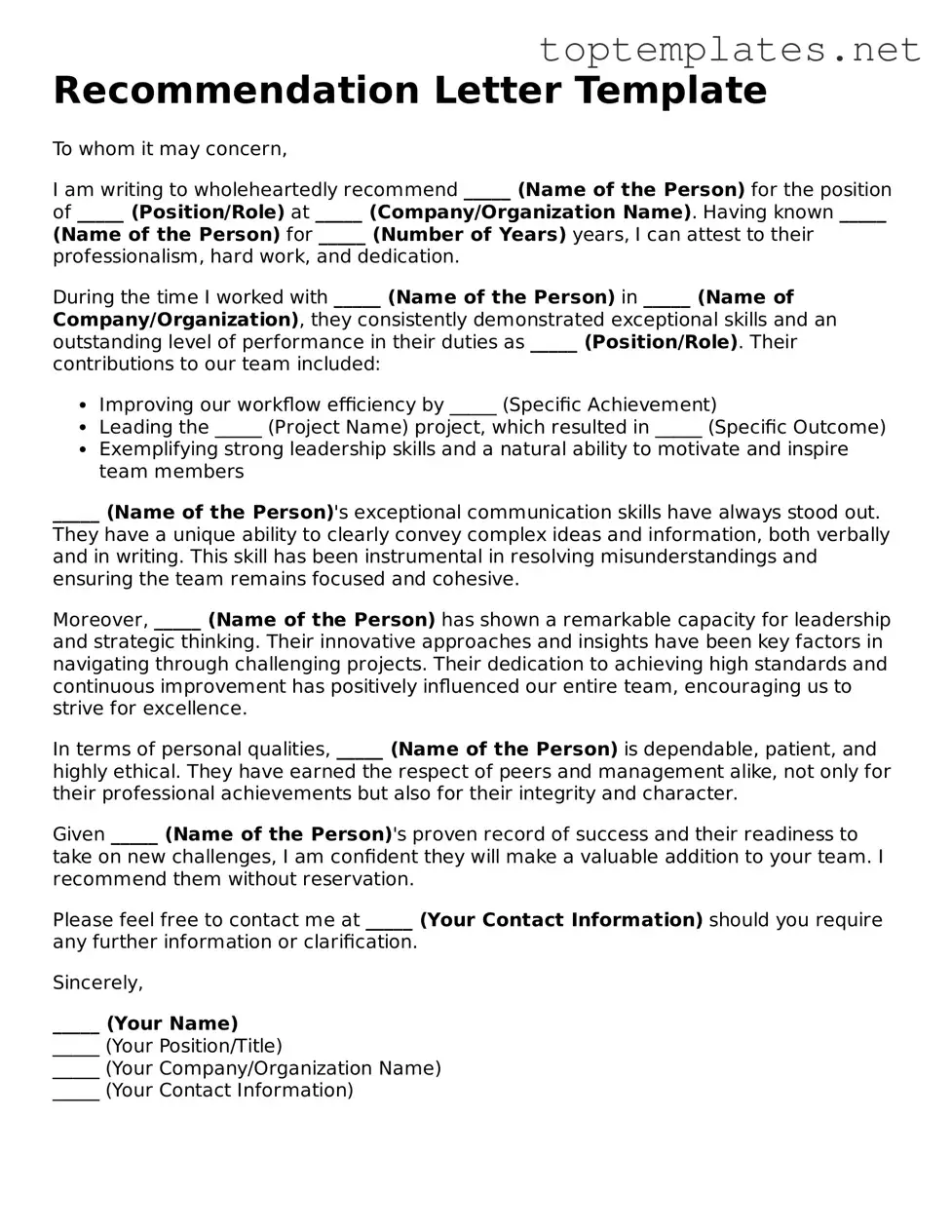What is the purpose of a Recommendation Letter?
A Recommendation Letter is used to provide a written reference for an individual, typically related to employment, scholarship, college admissions, or other opportunities. It serves to highlight the individual's achievements, character, and suitability for a specific position or award.
Who should write a Recommendation Letter?
The letter should be written by someone who knows the individual well and can provide concrete examples of their abilities and character. This could be a teacher, employer, coach, or other professional associate.
What should be included in a Recommendation Letter?
The letter should include a brief introduction of the writer, how they know the individual, detailed examples of the individual's achievements or qualities, and a clear recommendation for the purpose the letter is intended. It should also provide contact information for the writer, should the reader require further details.
How long should a Recommendation Letter be?
A Recommendation Letter should typically be one page in length. It needs to be concise yet comprehensive enough to convey the individual’s qualifications and character.
Can a Recommendation Letter be used more than once?
While a Recommendation Letter can be kept on file for use in multiple applications, it's best to tailor each letter to the specific opportunity. Generic letters are less impactful than those that clearly align with the position or award in question.
What is the difference between a Recommendation Letter and a Reference Letter?
Although similar, a Recommendation Letter is usually more specific to an opportunity, highlighting why the individual is a good fit. A Reference Letter is more general, discussing the individual's overall character and abilities without targeting a specific role.
Is it necessary to include the recipient's address in a Recommendation Letter?
While not always necessary, including the recipient's address can personalize the letter and show that it was written explicitly for the intended opportunity. However, if the letter is to be used for multiple applications, a general salutation may be more appropriate.
How should a Recommendation Letter be submitted?
The submission method varies according to the recipient's requirements. It can be sent directly by the writer via email or postal mail, or handed to the individual to submit with their application. Always follow the specific guidelines provided.
